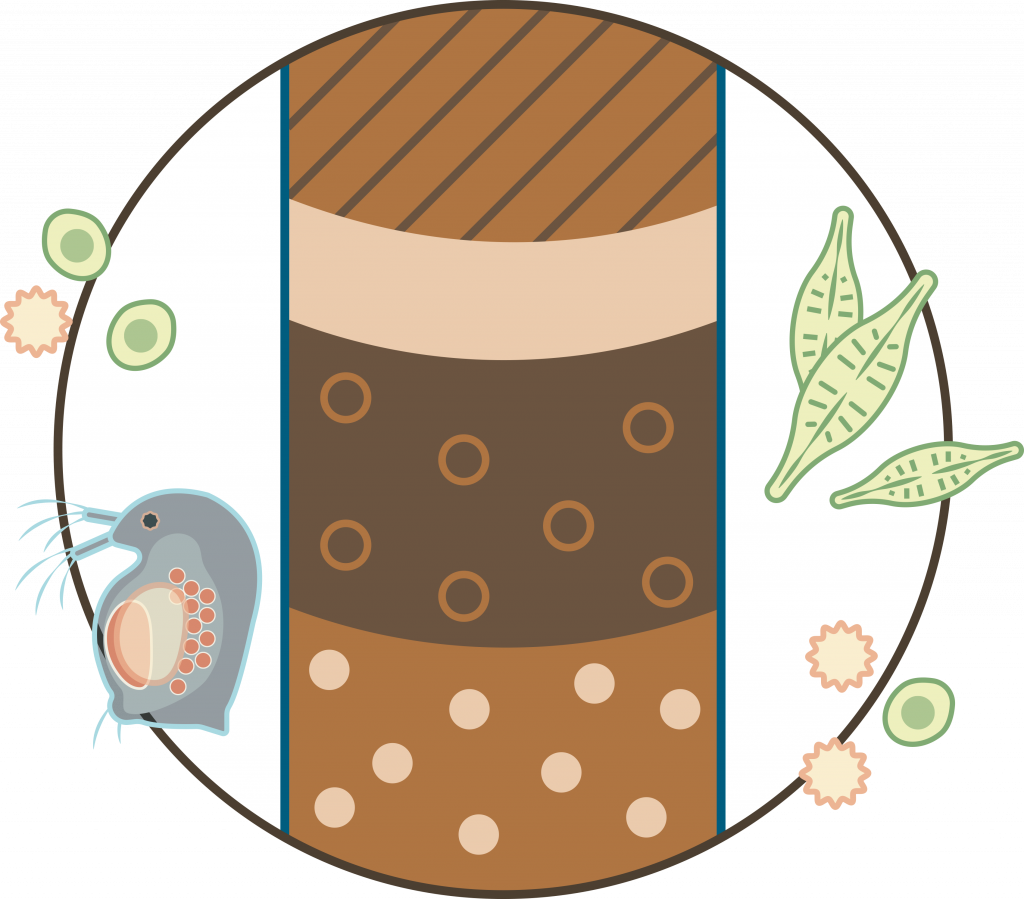
What do we do in the Paleoecology team?
Using the sediments in the ponds, we study the past to understand how species and ecosystems will face global change.
Our goal is to recreate the conditions that existed in the past in lake systems and their basins; we want to understand how they evolved from the past until the present day, and we do so by studying the sediments that have been deposited over the years. We search for relationships between changes in the ecosystem and changes in the climate or in direct human activity. In our search, we use the sediments in the ponds in Sierra Nevada as a witness to global change.
One of our concerns is that, in Southern Spain, it is expected that temperatures will increase and droughts will become more frequent because of climate change. This will cause environmental problems, which will be even more serious than those currently faced nowadays. In order to make forecasts, we study how the climate and the environment were in the past, when conditions were warmer and drier, and we try to find out how species adapted to previous climate changes. Besides, learning more about the ecological status of ecosystems before the 20th century helps us identify the environmental degradation caused by human activity to this day.
Thanks to the sediments we collect, we may read what the climate in the past was like and the changes that have taken place in the ecology of ecosystems. We analyse both biological signals (fossil pollen, coals, diatoms, cladocerans or chironomids) and physical and chemical signals (organic and inorganic) that have been engraved in them.
How do we obtain these data?

What did we find out?
We have learned more about the effects of climate change on the Sierra Nevada summits
According to our analyses, there have been changes in climate, in the communities of organisms and in the Saharan dust episodes.
How does this benefit us?
Understanding how ecosystems will react to the rapid global warming will have a positive impact from the social and economic point of view.
Our data will substantiate new policies aimed at facing future environmental scenarios caused by global warming, and they will influence the decisions taken by managers.
Learning more about the global warming that has taken place over the years in Sierra Nevada and in other wetlands in the Mediterranean region empowers us to attempt to predict what the climate will be like in the future, and take actions to reduce any potential detrimental effects on human populations.
The Natural and National Park of Sierra Nevada provides the areas of Granada and Almeria with the water provision ecosystem service. This supply stems from the ponds that are found in the summits we study in the Sierra. As climate change becomes more intense, and so do summer droughts and the pressure posed by direct human activity, the availability of water could be altered. This would be detrimental to the local population, as it would limit the availability of quality water for drinking, irrigating, or doing other activities. Besides, economic activities such as tourism would be affected.

Data generated by the team
Learn more about the data we are generating- Dataset of biotic paleontological variables (pollen, spores, algae, charcoals, etc.).
- Dataset of abiotic palaeontological variables (sedimentology, geochemistry, pollutants, aerosols, etc.).





